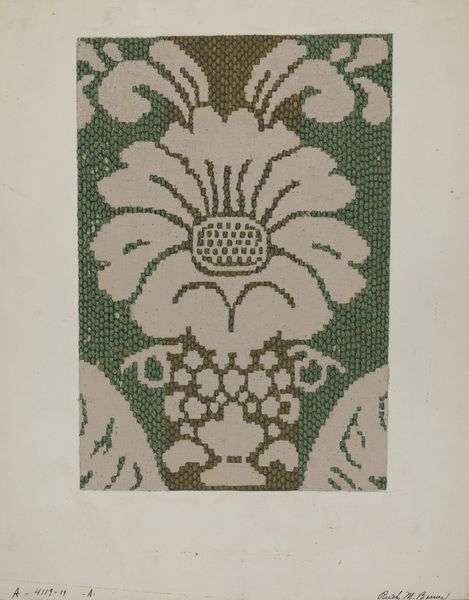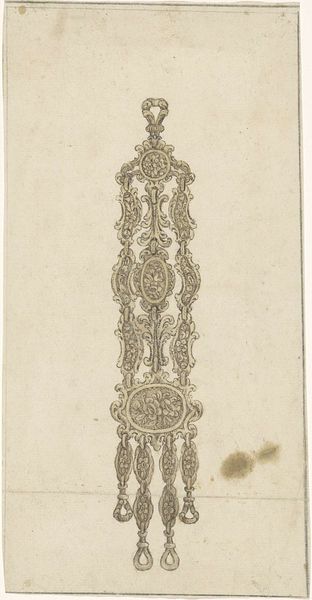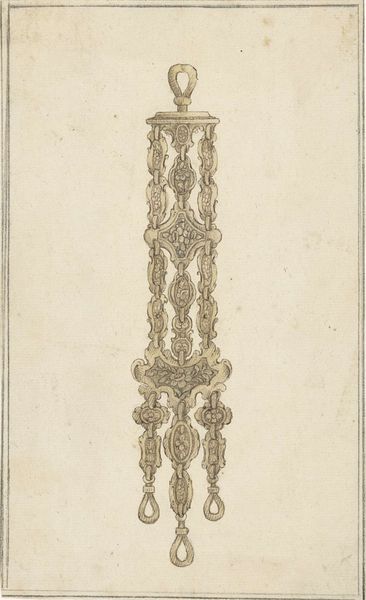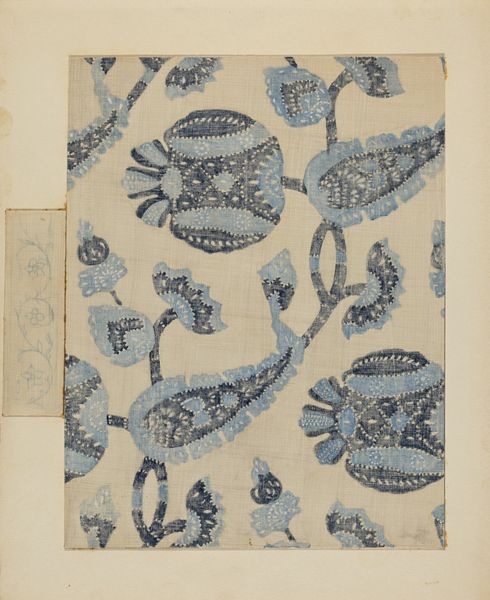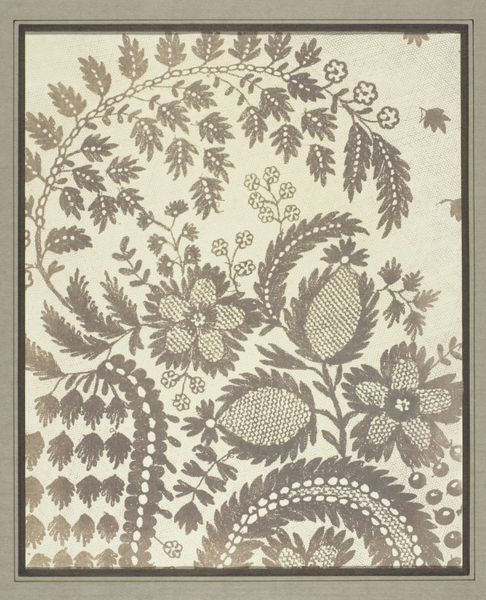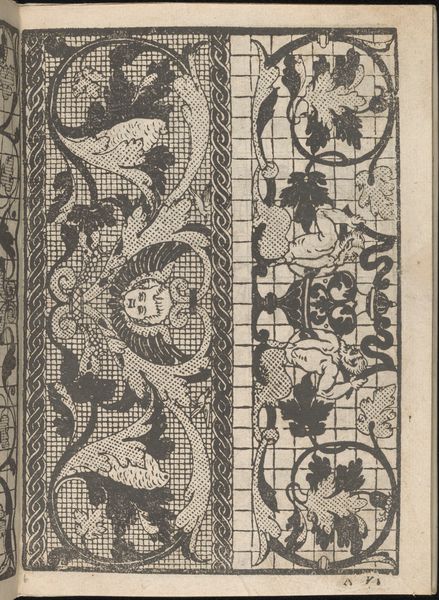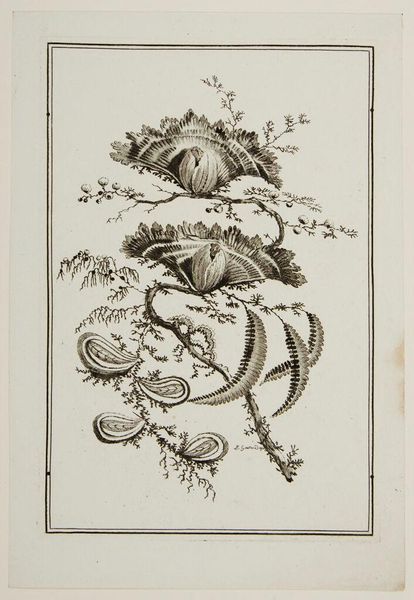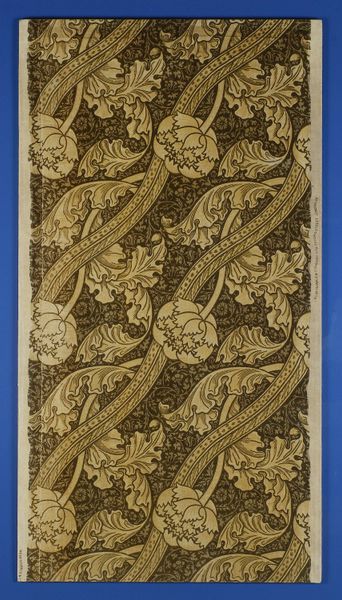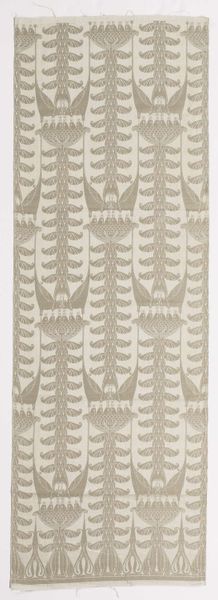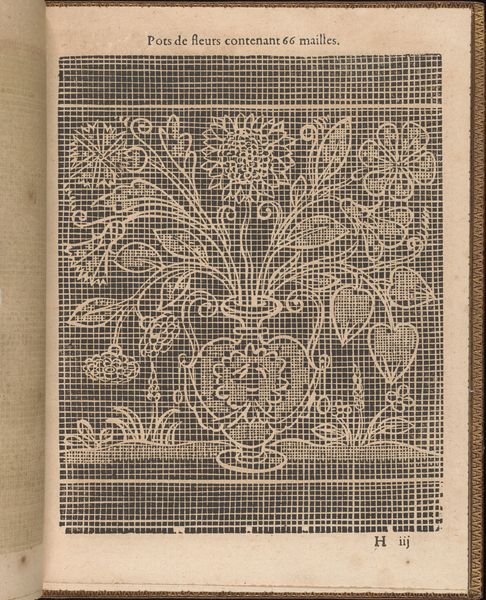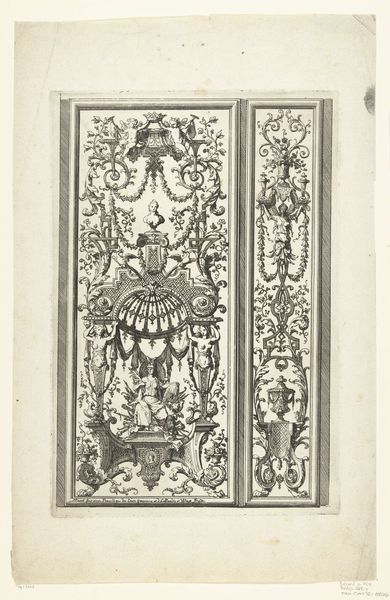
Cerfs et noisetiers, bordure, carreaux céramiques; hippocampe et algues, pied de coffret, bronze; lézards et pavots, broderie 1897
0:00
0:00
graphic-art, print, etching
#
graphic-art
#
art-nouveau
#
linocut
# print
#
etching
#
landscape
#
etching
#
tile art
#
decorative-art
Copyright: Public Domain: Artvee
Curator: This piece by Maurice Pillard Verneuil, made in 1897, titled "Deer and Hazelnuts, Border, Ceramic Tiles; Seahorse and Seaweed, Foot of Box, Bronze; Lizards and Poppies, Embroidery", is fascinating. It appears to be a compilation of designs for different applied arts. Editor: My first thought is of quiet elegance. The restrained color palette, primarily shades of green, creates a very calm and refined atmosphere. The meticulous details within each panel—deer heads, the delicate seaweed around the seahorse—speak to a deep appreciation for nature's artistry. Curator: Exactly! This work perfectly exemplifies the Art Nouveau movement's focus on natural forms. What’s interesting, however, is the commercial application: the suggestion of repeating tile patterns for mass production versus unique bronze elements reveals the tension of the industrial revolution and the aesthetic concerns that came with it. It seeks to infuse everyday objects with artistry. The embroidery aspect speaks further of domestic life and craft, particularly associated with women's labor and artistic skill at the time. Editor: You’re right, and looking closely, I am drawn to that tension. Each design, though individually beautiful, possesses this inherent quality, poised between unique handcrafted pieces and the potential for replication, which surely created societal debate regarding mass manufacture. Curator: And think about it in terms of accessibility. Art Nouveau, while embracing intricate design, sought to democratize beauty by bringing art into homes and public spaces via functional objects. This piece embodies that very spirit of democratization but its reliance on skilled labor would perhaps prove hard to reach for much of society. Editor: I can see the utopian impulse there, imagining beautiful and inspiring surroundings accessible to a broader audience. But also the problem that would quickly need solving – as industrial capitalism threatened the human touch of creative artistry, Art Nouveau proposed beauty through machine production – however it was the economic realities of early capitalism which shaped the cultural response, and Art Nouveau could never fulfil this ideal without creating additional labor market issues. Curator: Ultimately, the social contradictions inherent within capitalism undermined the ideal of "Art for All", but these aspirations of Art Nouveau make pieces such as this significant documents of design history. Editor: It is an interesting example of a progressive ideal undermined by the complexities of early capitalism. The interplay between Verneuil's designs and their social context keeps it relevant to ongoing conversations surrounding art, labor, and accessibility.
Comments
No comments
Be the first to comment and join the conversation on the ultimate creative platform.
